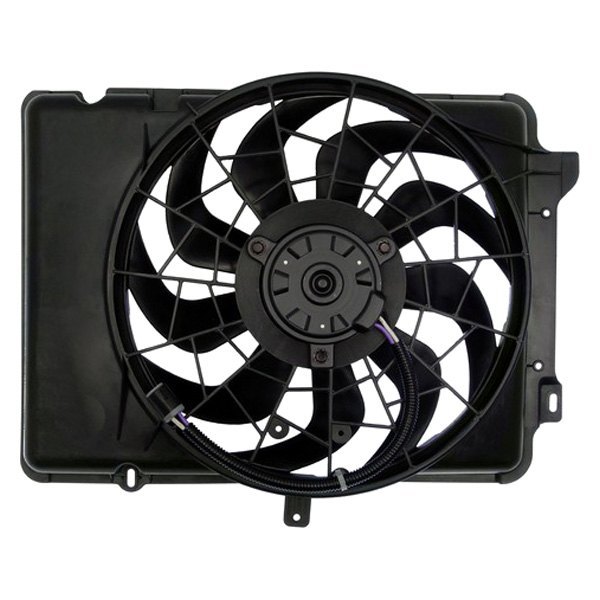
SUMMARY OF THE INVENTIONĪn object of the invention is to fulfill the need referred to above.
#Siemens vdo automotive electric fan series#
The noise is most problematic at motor start-up, where currents are momentarily high, and also at low speed operation where fan-related noise is not sufficient to mask the noise of the motor.įor some PWM applications, high frequency switching is used which reduces the audible noise level but this requires more costly electronic switching components.Īccordingly, there is a need to provide a switching arrangement for motor speed control that combines the advantages of a series resistor (quiet motor start-up and quiet operation at low speed) with the advantages of PWM motor control (infinitely variable speed control with reasonable electrical efficiency). PWM-controlled motors typically generate an audible “buzz” of the same frequency that is used for PWM switching. The use of PWM electronics for motor control is becoming more widespread, but this system has a significant disadvantage.

The advantages and disadvantages of these two conventional speed control methods are shown in the following table:įor new automotive applications, series resistors are now rarely specified because of their poor efficiency under controlled-speed operation, also because they typically only offer two speed choices. Various methods of speed control have traditionally been used, including (1) the use of electrical resistors connected in series with the fan motor, or (2) connecting the motor via an electrical switching unit to provide a “chopped” pulse width modulated current source.

This ensures that the audible noises generated, and the electrical current drawn, are kept to the lowest achievable levels for the vehicle's specific operating conditions.

The present invention relates generally to permanent magnet electric motors for automobile applications and, more particularly, to a switching arrangement including both a resistor and a pulse width modulated (PWM) controlled switch that operate independently or in combination to control the speed of a permanent magnet electric motor.įor automotive engine-cooling fan motors, it is preferable to provide variable operating speeds so that the fan speed can be well matched to the cooling requirement.
#Siemens vdo automotive electric fan full#
The motor speed control system of claim 1, wherein the first and second switches and the controller are constructed and arranged to provide 1) an off mode of operation wherein the first switch is off providing no current to the motor, 2) a start-up mode of operation wherein current to the motor is supplied solely by the first switch, 3) an intermediate speed mode of operation wherein current to the motor is supplied partly by the first switch and partly by the second switch operating at less than a fully on condition, and 4) a full speed mode of operation wherein current to the motor is supplied by the first switch and by the second switch operating at fully on condition. A motor speed control system comprising: a permanent magnet direct current electric motor, a first switch in series with the motor a circuit in series with the first switch, the circuit at least including a resistor and a second, pulse width modulated controlled, switch in parallel with the resistor, and an electronic controller operatively associated with the first and second switches for electronically controlling the first and second switches independently and in combination to control current to the motor to operate the motor at various speeds.Ģ.


 0 kommentar(er)
0 kommentar(er)
